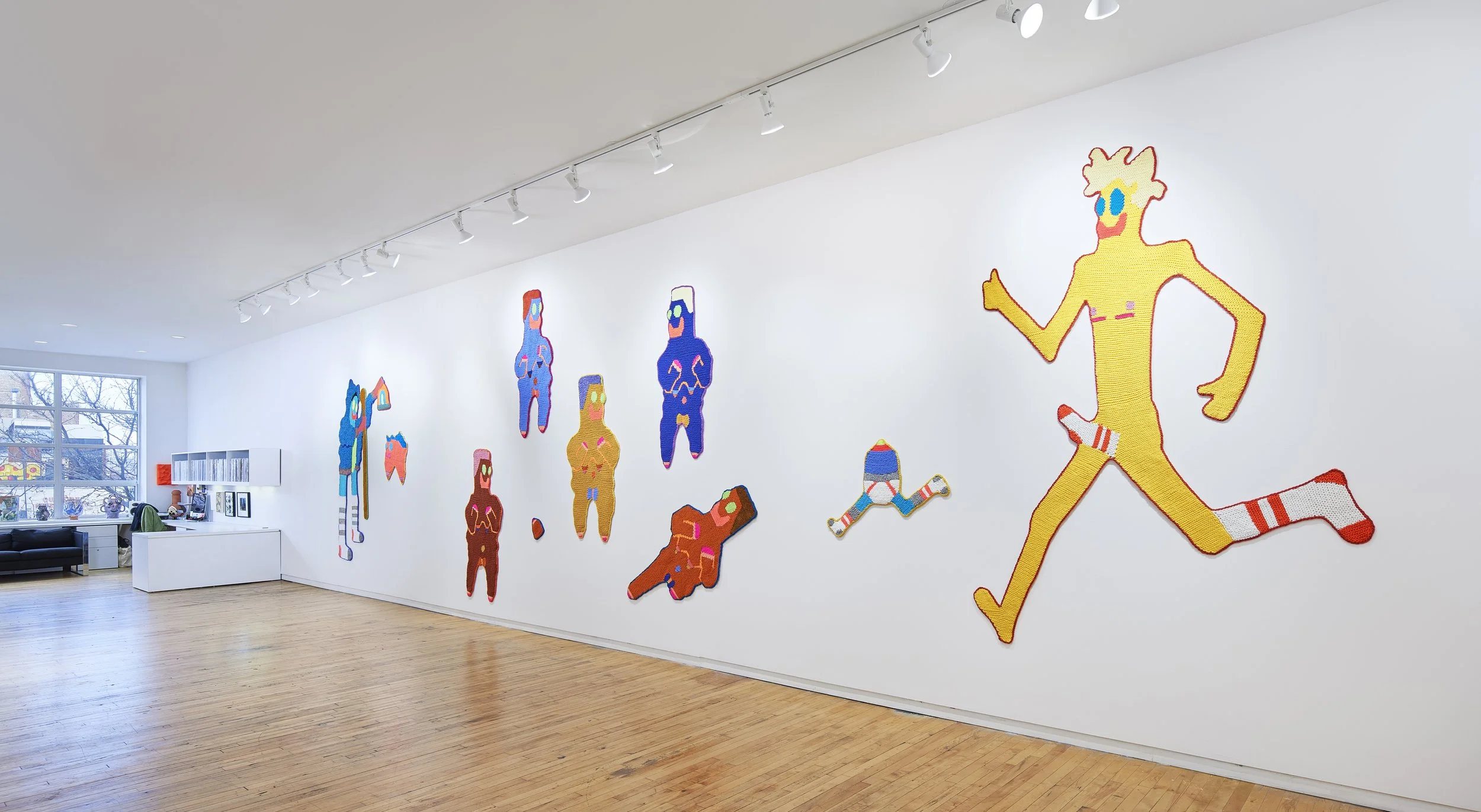Orange Sunshine
November 4 - January 13. 2018
Chicago, IL
Andrew Rafacz
The hand-crocheted characters in Caroline Wells Chandler’s practice represent the spectrum of gender nonconforming bodies, creating a new language of figuration that challenges traditional portrayals of the body. Conventionally signified identities such as the athlete or the cowboy are joyfully subverted through Chandler’s dynamic, formal language. They become iconic, jubilant guardians, inhabiting Chandler’s ‘Queertopia’, a psychedelic space in which, as the artist describes, ‘the zany and profound reign supreme.’
Chandler’s practice of crocheting is drawn in part from the feminist craft tradition of the 1970’s. The act of utilizing the practice of crochet, typically thought of as a domestic activity, further disrupts tradition, reinforcing Chandler’s position as a ‘queer anthropologist.’
Through his crocheted figures, produced in vibrant colors and marked with radiant expressions, the artist explores queerness and joyful weirdness, while challenging the painting canon. Chandler is focused on inventing a new kind of figuration in which color is intrinsically linked to process, material and content.
For his first exhibition with the gallery, Chandler has created a new body of work drawn from a number of sources. The artist continues to present individual figures as well as combined figures and tableaus that suggest a play on the idea of the hero’s/fool’s journey, referenced in mythology and the tarot.
One series of his new individual figures are titled Venus of Willendorf and Her Lesbian Posse, a direct reference to the prehistoric figurine that bears exaggerated sexual features and is often considered to have been a fertility fetish object. This stone carving has no face or feet and literally cannot stand on its own. Chandler sublimely and cleverly reworks this early depiction of female-ness and the contentions surrounding its historical ramifications into something wholly other and contemporarily compelling.
These individual smaller works are joined by larger ones that combine multiple figures and bodies. The title work in the exhibition, Orange Sunshine, depicts the artist’s iconic characters in a circle, arm in arm. They appear to be in high spirits, as if they are dancing or celebrating. Another large-scale works articulates two bodies fully intertwined. Their unified composition suggests both an intimate sexual experience and the security of collective repose. While playfully opening up notions of queer sex and identity, these works also reinforce ideas of love and community.
Another large-scale work, The Hermit, creates a sense of narrative that grounds the rest of the installation, by introducing the idea of a journey. Positioned visually at the beginning of the space, this figure assumes both the role of narrator and shepherd. On the same wall but at the opposite end of the gallery and facing the hermit, The Fool, seemingly containing boundless energy, is happily engaged in their monomythic adventure. These notions of identity, journey, redemption, and evolution imbue Chandler’s characters with philosophical and ontological depth, giving them further dimension and possibility.






